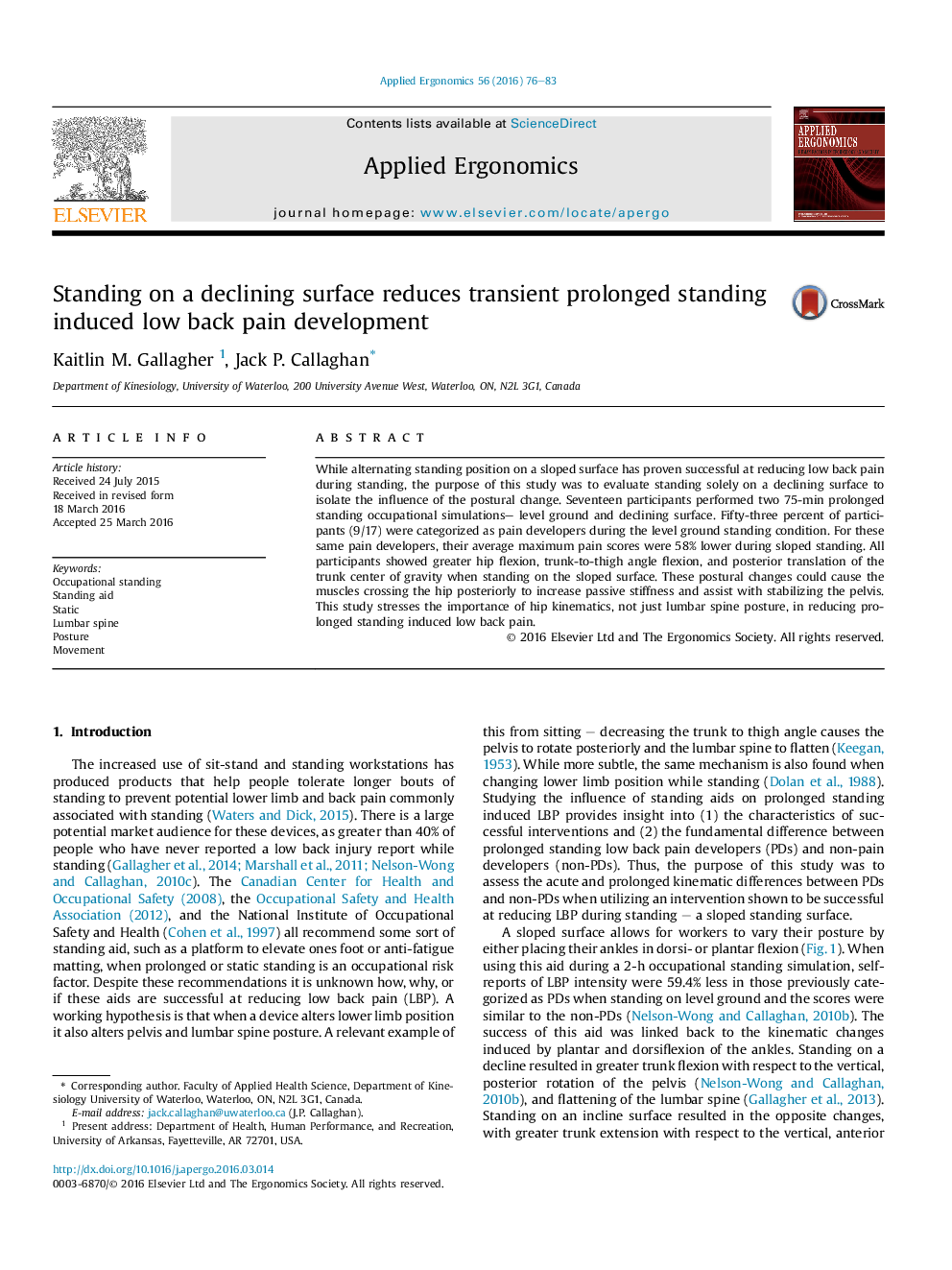| Article ID | Journal | Published Year | Pages | File Type |
|---|---|---|---|---|
| 6947800 | Applied Ergonomics | 2016 | 8 Pages |
Abstract
While alternating standing position on a sloped surface has proven successful at reducing low back pain during standing, the purpose of this study was to evaluate standing solely on a declining surface to isolate the influence of the postural change. Seventeen participants performed two 75-min prolonged standing occupational simulations- level ground and declining surface. Fifty-three percent of participants (9/17) were categorized as pain developers during the level ground standing condition. For these same pain developers, their average maximum pain scores were 58% lower during sloped standing. All participants showed greater hip flexion, trunk-to-thigh angle flexion, and posterior translation of the trunk center of gravity when standing on the sloped surface. These postural changes could cause the muscles crossing the hip posteriorly to increase passive stiffness and assist with stabilizing the pelvis. This study stresses the importance of hip kinematics, not just lumbar spine posture, in reducing prolonged standing induced low back pain.
Related Topics
Physical Sciences and Engineering
Computer Science
Human-Computer Interaction
Authors
Kaitlin M. Gallagher, Jack P. Callaghan,
